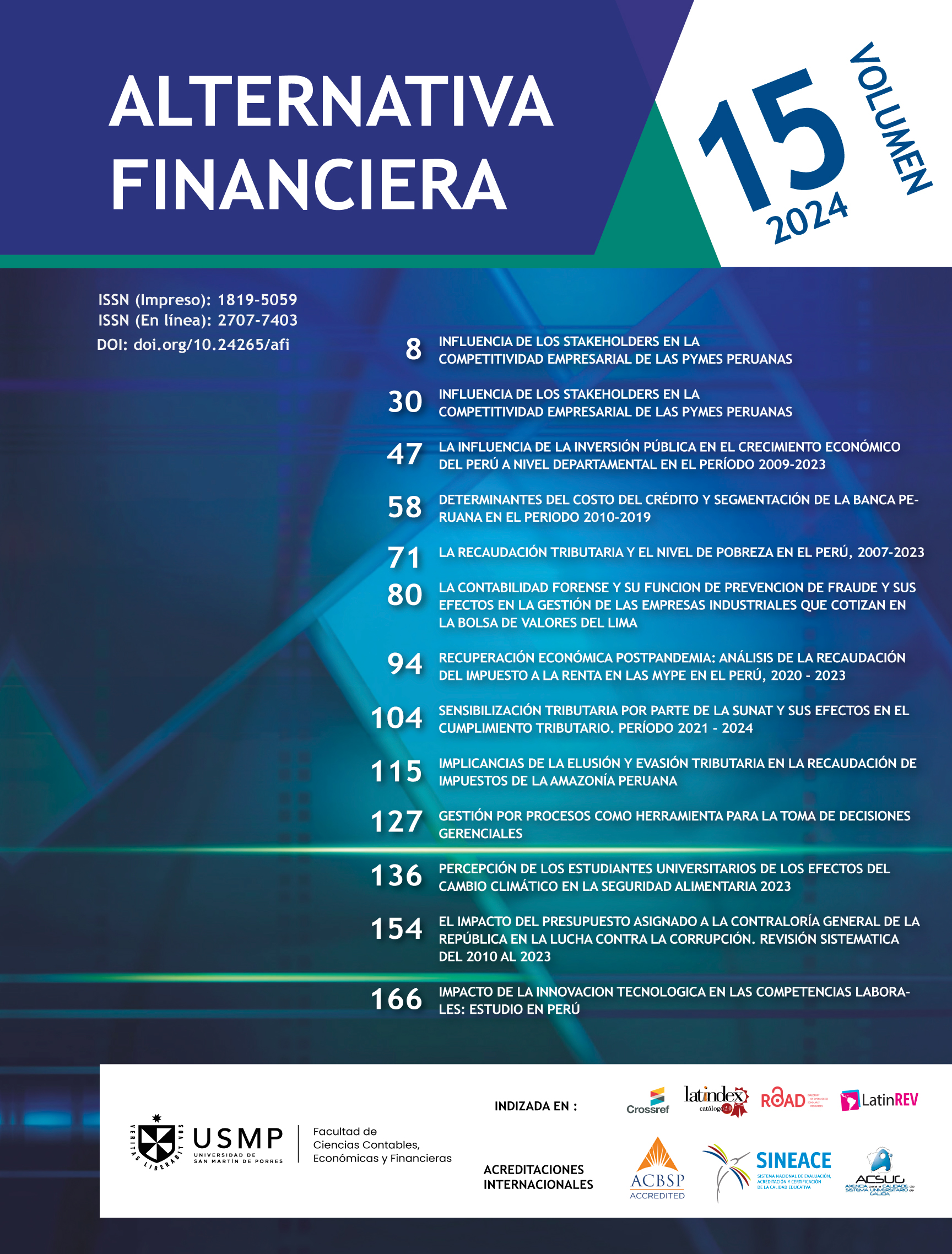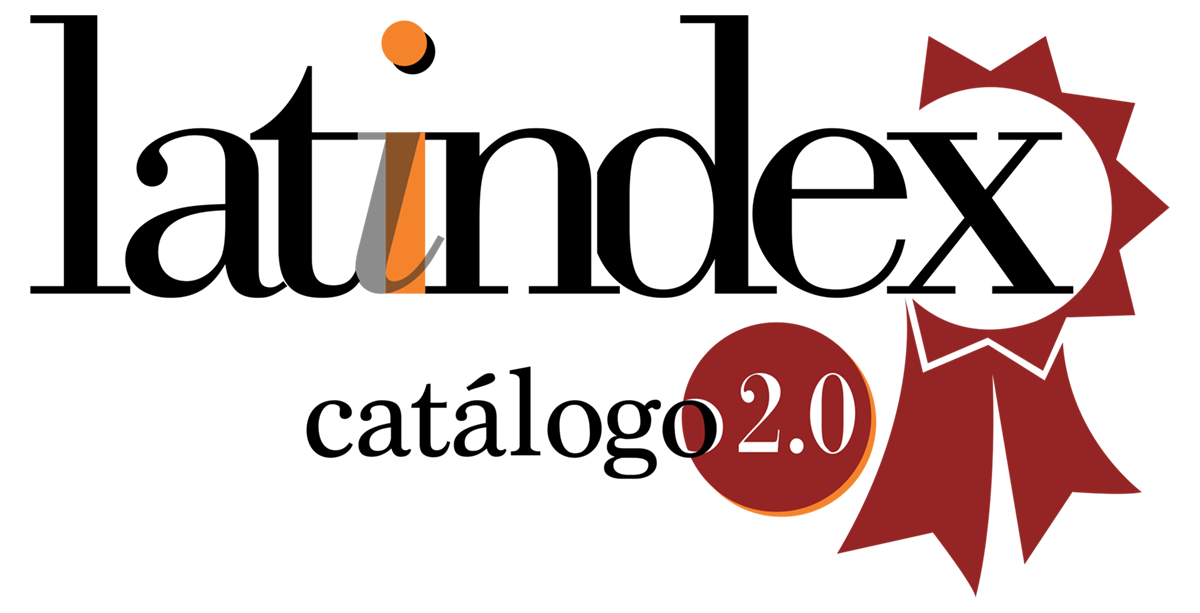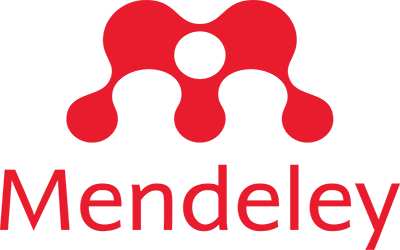DETERMINANTS OF THE COST OF CREDIT AND SEGMENTATION OF PERUVIAN BANKING IN THE PERIOD 2010-2019
Keywords:
banca, concentración economica, rentabilidad, riesgoAbstract
The main objective of this research was to establish how the determinants of the cost of credit affected the behavior of the national banking market in the period of analysis. As well as validating that the segments with the highest cost of credit are not the most profitable in Peruvian banking. The research will seek to develop a greater theoretical understanding of the variables that determine the credit profit margins of Peruvian banks, analyzing the concepts of concentration, segmentation, risk and profitability of the market, showing the mechanisms that different banks use in defining their target customer segments. As an analysis methodology, the Superintendency of Banking and Insurance and AFPs were used as a source of information, which allowed for 560 quarterly observations of the banking market in the period 2010-2019, to validate the relationship between the cost of credit of the banks and their determinants such as financial, credit and operational costs, as well as banking segmentation of clients according to their risk profile. A Panel Data econometric model was used with fixed effects with autoregressive terms. The results show us that there is a positive relationship between the determinants and the cost of credit, especially in terms of the credit cost (risk level) with a probability of 30.9% (95% CI: 0.1694-0.449) and the operating cost with a probability of 63.7% (95% CI: 0.4215 – 0.854) affecting the cost of bank credit. Likewise, it was found that the institutions carried out their credit operations based on the defined segmentation of their target clients. Thus, uncertainty and segmentation play a vital role in the cost of credit in the Peruvian financial market.
KEYWORDS: banking, economic concentration, profitability, risk.
Downloads
References
Asbanc. (2018). A pesar de la alta concentración, hay fuerte competencia en el sistema bancario. Revista Finanzas. Asbanc: A pesar de la alta concentración, hay fuerte competencia en el sistema bancario» Más Finanzas (masfinanzas.com.pe)
Avelino, E. (2010). Costo del crédito en el Perú. Facultad de ciencias contables. UNMSM. Quipukamayoc02v17n34_2010.
pdf (unmsm.edu.pe)
Batillana, F. y Ruiz, J. (2010). Análisis del spread de tasas para economías latinoamericanas. Estudios de Administración, Vol. 17(2), 53-91. Análisis-de-spread.pdf (uchile.cl)
Choy, M., Costa, E., y Churata, E. (2015). Radiografía del costo del crédito en el Perú. Revista de estudios económicos 30, 25-55. BCRP. Radiografía del costo del crédito en el Perú (bcrp.gob.pe)
DOJ. (2010). Horizontal mergers guidelines (08/19/2010). Anti-Trust Division. U.S. Department of Justice. Horizontal Merger Guidelines (08/19/2010) (justice.gov)
López, E. (2022). La concentración y extranjerización de la banca en México. Revista Expansión. La concentración y extranjerización de la banca en México (expansion.mx)
Martin, M. (2009). Transparencia y Concentración Bancaria en el Perú. ESAN. Transparencia y concentración bancaria | Conexión ESAN
Superintendencia de Banca y Seguros y AFP’s. (2020). Reportes estadísticos de 2020. Sistema Financiero_ (sbs.gob.pe)
Superintendencia de Banca y Seguros y AFP’s (2022). Encuesta nacional de capacidades financieras. Principal SBS > Boletín > DetalleBoletín
Swissinfo (07 de junio de 2021). La concentración del sistema bancario se redujo en Brasil en 2020. La concentración del sistema bancario se redujo en Brasil en 2020 - SWI swissinfo.ch
Downloads
Published
Issue
Section
License
Copyright (c) 2024 Olger Luque Chávez

This work is licensed under a Creative Commons Attribution-NonCommercial-ShareAlike 4.0 International License.
Creative Commons Atribución-NoComercial-CompartirIgual 4.0 Internacional (CC BY-NC-SA 4.0). Faculta a los usuarios a compartir: copiar y redistribuir el material en cualquier medio o formato y adaptar: remezclar, transformar y desarrollar el material, siempre y cuando se acredite al autor original, no se utilice con propósitos comerciales y las nuevas creaciones se licencien bajo los mismos términos de esta licencia.













